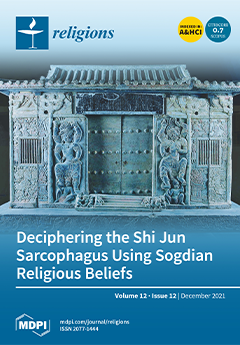Contemporary Indian philosophy is a distinct genre of philosophy that draws both on classical Indian philosophical sources and on Western materials, old and new. It is comparative philosophy without borders. In this paper, I attempt to show how contemporary Indian philosophy works through
[...] Read more.
Contemporary Indian philosophy is a distinct genre of philosophy that draws both on classical Indian philosophical sources and on Western materials, old and new. It is comparative philosophy without borders. In this paper, I attempt to show how contemporary Indian philosophy works through five instances from five of its protagonists: Krishnachandra Bhattacharyya (his new interpretation of the old rope-snake parable in his essay “Śaṅkara’s Doctrine of Maya”, 1925); Daya Krishna (I focus on the “moral monadism” that the theory of karma in his reading leads to, drawing on his book
Discussion and Debate in Indian Philosophy, 2004); Ramchandra Gandhi (his commentary on the concept of Brahmacharya in correspondence with his grandfather, the Mahatma, in his essay “Brahmacharya”, 1981); Mukund Lath (on identity through—not despite—change, with classical Indian music, Rāga music, as his case-study, in his essay “Identity through Necessary Change”, 2003); and Rajendra Swaroop Bhatnagar (on suffering, in his paper “No Suffering if Human Beings Were Not Sensitive”, 2021). My aim is twofold. First, to introduce five contemporary Indian philosophers; and second, to raise the question of newness and philosophy. Is there anything new in philosophy, or is contemporary philosophy just a footnote—à la Whitehead—to the writings of great thinkers of the past? Is contemporary Indian philosophy, my protagonists included, just a series of footnotes to classical thinkers both in India and Europe? Footnotes to the Upaniṣads, Nāgārjuna, Dharmakīrti and Śaṅkara, as much as (let us not forget colonialism and Macaulay) to Plato, Aristotle, Kant and Hegel? Footnotes can be creative and work almost as a parallel text, interpretive, critical, even subversive. However, my contention is that contemporary Indian philosophy (I leave it to others to plea for contemporary Western philosophy) is not a footnote, it is a text with agency of its own, validity of its own, power of its own. It is wholly and thoroughly a text worth reading. In this paper, I make an attempt to substantiate this claim through the philosophical mosaic I offer, in each instance highlighting both the continuity with classical sources and my protagonists’ courageous transgressions and innovations.
Full article





